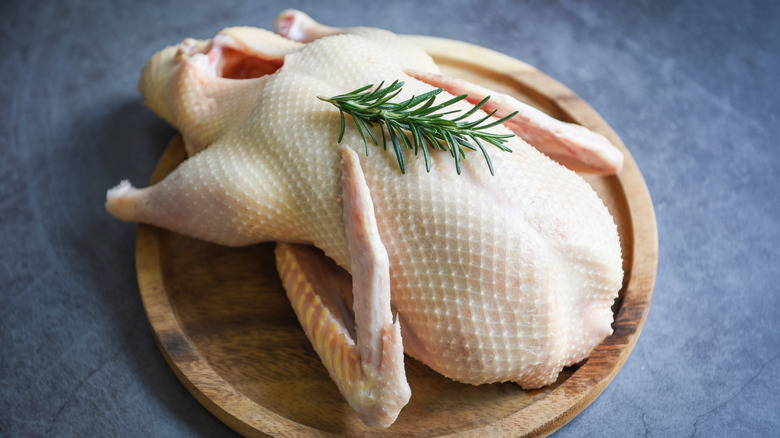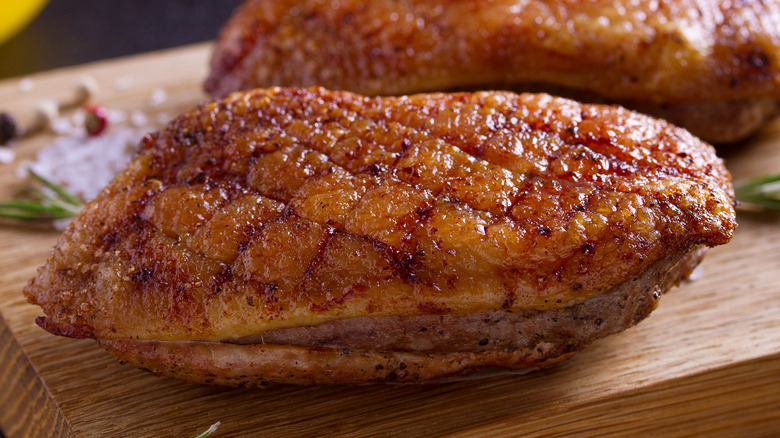Why It Pays To Poke Your Duck Before Cooking
When it comes to our taste in meat, Americans certainly are a predictable bunch. Of the Top 10 Favorite Meat Dishes in the U.S., as listed by Taste Atlas, the spread is relatively even between chicken, pork, and beef — though if you're counting, beef takes the win. In 2021, the USDA released data showing that chicken consumption trumped both beef and pork by a decent margin, with fish and shellfish humbly bringing up the rear. Absent from this data set is the presence of waterfowl, such as ducks and geese or game birds. There is a reason for this: Americans simply don't eat these birds.
It may sound as though we're speaking in broad swaths, but when you compare the numbers of chickens raised and consumed vs. ducks, you'll understand why the previous statement is not much of an exaggeration. The most recent data set shows that the disparity between ducks slaughtered vs. chickens slaughtered is in the millions (via Agricultural Marketing Resource Center and The National Chicken Council). According to The Counter, the chief reason for this seismic difference owes to the fact that ducks are nowhere as easy to raise as chickens. Ducks also provide very little meat output for all the effort that goes into raising them. However, this bird has the upper hand in the depth of flavor, per MedMunch, mainly due to a beautifully thick layer of fat that yields some wonderfully tasty results when prepped and cooked properly.
Poke for better rendering and crispy skin
Owing to its nature as a waterfowl, a duck will have a considerable layer of subcutaneous fat beneath its skin. This fat content serves a dual purpose as meat protector and flavoring. According to MasterClass, the fat content in the skin helps to keep the bird's breast meat moist and packed with flavor. Still, trimming any excess fat will go a long way towards keeping your duck from being unappetizingly greasy. In addition, you can retain the trimmed fat for use in other dishes.
Now that you've trimmed the fat, the next step in preparing your great roast duck is to poke or score the skin. According to Bon Appétit, poking holes in the fat of the skin, either with a fork or paring knife — being sure not to puncture the meat beneath — allows for faster, more evenly distributed fat rendering as the duck is roasting. Another way of doing this is by scoring the skin. As MasterClass explains, scoring is a technique of lightly cutting a crisscross pattern in the duck's skin, again being careful not to cut into the meat. By doing either of these two techniques, the rendered fat will not only help keep the meat underneath moist and tender but help give you that desired, crispy skin that is so indicative of roast duck.

